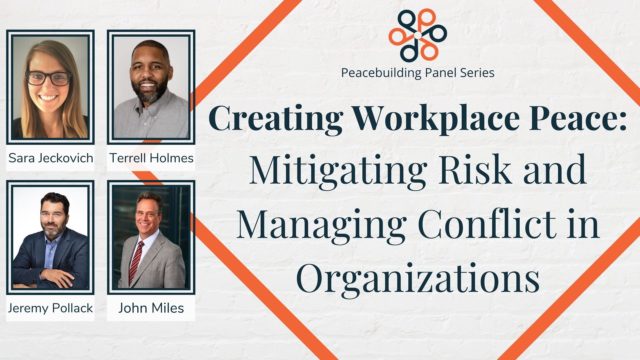When it comes to mastering conflict resolution, understanding proven strategies is essential. The Thomas Kilmann model, which outlines the five conflict resolution strategies, offers a practical framework for handling the diverse challenges that arise in workplace dynamics. Each strategy provides real-world insights into managing disputes, whether you are addressing minor misunderstandings or deeply rooted issues.
Below, we explore some of the most common strategies in action-some highly effective, others less so. By learning from both, you can sharpen your ability to navigate conflicts, strengthen your team’s collaboration, and foster a more harmonious work environment. Dive in and discover how these approaches can elevate your management skills.
1. Compromising
The compromise method is a conflict resolution strategy that focuses on mutual agreement. This lose-lose strategy requires both parties to think critically about the bigger picture and why resolving the issue is essential, especially for workplace harmony. While it may not solve the root cause, compromise often provides a practical solution to help teams move forward.
Consider an example where a coworker frequently takes cigarette breaks, leading to frustration among team members who perceive it as unfair. Instead of immediately escalating the situation, a manager might suggest limiting the smoker’s breaks to three or four a day. While this does not address the larger issue of smoking, it is a temporary solution that maintains harmony in the short term. In the meantime, offering longer break times to others could ensure equity and satisfaction within the team.
When to Use Compromise
Compromising works best in specific scenarios:
- When the dispute involves workplace conflicts with no clear winner.
- When resolving conflict quickly is more important than finding the perfect solution.
- When both parties hold valid but opposing views, such as resource allocation disagreements.
- When preserving relationships outweighs the need to push a personal agenda.
Advantages of the Compromising Style
- Quick Resolutions: By focusing on partial agreements, compromise helps teams refocus on more pressing matters.
- Balanced Approach: Both sides make concessions, ensuring fairness.
- Reduces Tension: Resolving conflict through compromise helps maintain positive working relationships.
Limitations to Keep in Mind
Compromise has its downsides:
- Temporary Solutions: It does not always address underlying issues, leaving room for future conflict.
- Residual Frustration: One or both parties may feel they gave up too much, leading to resentment.
- Not Ideal for Complex Problems: Larger issues often require additional conflict resolution strategies like collaboration.
Practical Tips for Success
To make compromise effective:
- Practice active listening to understand what matters most to each party.
- Identify non-negotiables to ensure fairness and efficiency.
- Use compromise as a stepping stone rather than a permanent fix when addressing deeper issues.
2. Avoiding
Some managers prefer to steer clear of confrontations, relying on avoiding conflict as a means of coping. At first glance, this approach can seem tempting. After all, sidestepping disagreements spares you the immediate discomfort of addressing them head-on.
However, avoiding an issue rarely resolves conflict effectively. Instead, it allows tensions to simmer, often transforming minor disputes into major disruptions that can spread across teams or even the entire workplace.
Why does this happen? The answer lies in human behavior. Many people fear confrontation because it feels risky, especially in professional settings. However, conflict resolution strategies are not about winning or losing but about creating opportunities for growth. Delaying action might provide short-term relief, but in the long term, unresolved issues can fester, erode trust, and damage morale.
When Avoidance Becomes a Problem
Avoidance might be an appropriate way to manage conflict for trivial matters or when a cooling-off period is needed. However, it becomes detrimental when used to escape responsibility or when it undermines team cohesion. For example, ignoring a teammate’s repeated complaints about workload imbalance could cause frustration, leading to resentment and disengagement.
Body language also plays a significant role in how people perceive avoidance. Subtle cues, such as avoiding eye contact or redirecting conversations, can signal disinterest, damaging the healthy relationship needed for open dialogue. This is why developing strong emotional intelligence and communication skills is critical when managing workplace dynamics.
How to Address Avoidance
Instead of sidestepping issues, use proactive conflict resolution strategies. Begin by acknowledging the problem with the other party involved. Set a clear timeline for discussions to ensure accountability. During conversations, use your body language to convey attentiveness. Maintaining eye contact, nodding, and adopting an open posture show respect.
Equally important is understanding when to seek help. Not every leader or employee has the conflict resolution skills to handle conflict independently. In such cases, mediators can facilitate discussions and create solutions tailored to the situation. This not only addresses the immediate problem but also builds a foundation for long-term collaboration.
3. Accommodating
Often called “smoothing over” a conflict, the accommodating approach prioritizes the other party’s needs over your own. It is a conflict resolution strategy that seeks harmony by making concessions, often at the cost of long-term stability.
For example, granting one employee a longer lunch break to avoid further disagreements might ease tension initially. However, unless such accommodations are equitable and do not harm the workplace’s bottom line, they can create resentment among other employees and even disrupt team dynamics.
When to Use Accommodating as a Conflict Resolution Strategy
Accommodating is one of the most cooperative conflict resolution strategies, but it comes with significant trade-offs. Leaders employing this method may unintentionally signal a lack of boundaries, leading to repetitive requests or unreasonable demands.
For instance, repeatedly giving in to one individual’s preferences might encourage others to push their limits, undermining your authority and making it harder to enforce fairness.
Despite these risks, the accommodating style has its advantages. It can quickly resolve conflict when emotions are high or when the issue at hand is minor. By yielding to the other party’s needs in low-stakes disputes, you can preserve relationships and maintain workplace peace.
This is especially useful for de-escalating tensions during emotionally charged moments or when addressing conflicts with a power imbalance, such as disagreements between managers and their teams.
Challenges of Accommodating in Conflict Resolution
Over-reliance on accommodation may lead to dissatisfaction or frustration. The accommodator’s contributions and ideas might be overlooked in favor of maintaining harmony, which stifles creativity and problem-solving.
Complex issues often require other strategies, such as collaboration or compromise, to ensure all voices are heard and all perspectives are valued.
How Effective Leaders Balance Accommodating With Other Strategies
An effective leader must know when and how to use this approach. Accommodating works well in situations where relationships matter more than the issue itself, such as resolving a one-off disagreement with a key team member or admitting fault in an error rather than assigning blame.
However, it is crucial to strike a balance. Leaders should carefully evaluate the stakes, prioritize fairness, and integrate other conflict resolution techniques to build trust while maintaining professional boundaries.
4. Collaborating
The collaborating conflict style is often celebrated as the most constructive way to resolve workplace conflicts. Unlike approaches that sidestep issues or rush to quick fixes, collaboration digs deep to address the core of the problem. The goal? A win-win outcome where everyone involved walks away satisfied. This style hinges on fostering open dialogue, mutual respect, and teamwork.
Collaboration is ideal for high-stakes situations where relationships and outcomes matter equally. Imagine two departments disagreeing over how to allocate limited resources. Instead of letting tensions rise, a collaborative approach would involve bringing both sides together to identify common ground. By merging their perspectives, they can co-create a plan that benefits the organization as a whole. It is not about one side winning-it is about everyone winning.
When to Choose Collaboration
This method shines in scenarios where the issue is too important for compromises or quick fixes. Whether the conflict involves project deadlines, workplace dynamics, or overarching goals, collaboration ensures that every party has a voice. It is also invaluable when protecting relationships and team morale, both of which are critical to long-term success.
However, collaboration is not always the best choice. It demands significant time and energy, which can be a luxury in fast-paced environments. For smaller disputes, such as scheduling conflicts or task delegation, simpler conflict resolution strategies may be more efficient. That said, when the stakes are high, few approaches deliver the same lasting benefits.
How to Collaborate Effectively
- Set the Stage: Create an environment where everyone feels heard and respected. Keep sensitive topics off limits to keep discussions focused and professional.
- Listen with Intent: Active listening is the backbone of collaboration. It helps uncover hidden needs and prevents misunderstandings.
- Aim for a Win-Win: Shift the focus from individual priorities to shared success. Collaboration thrives when solutions benefit the team as a whole.
- Stay Patient: This method takes time, but the outcomes-stronger relationships, innovative solutions, and team well-being-are worth the effort.
Of the five strategies for conflict resolution, collaboration is the most inclusive. It is not just about solving the problem but building trust and laying the foundation for better teamwork in the future.
5. Professional Mediation
Professional mediation is one of the most impactful conflict resolution strategies in the workplace. It offers a fair and structured way to tackle disputes. With an impartial mediator at the helm, everyone involved gets a chance to voice their concerns without interruption. This kind of setup not only fosters open communication but also ensures that all sides feel heard and valued.
What makes mediation so powerful? It transforms conflict into an opportunity for growth. Instead of focusing on blame, mediators guide teams toward solutions that benefit everyone. For example, a team struggling with workload distribution might uncover deeper issues-like unclear expectations or misaligned priorities. By addressing these root causes, mediation strengthens relationships and paves the way for smoother collaboration.
This process also improves decision-making. Mediators encourage participants to think critically and creatively, leading to outcomes that respect individual needs while keeping the team’s goals in mind. Better yet, these solutions often help teams avoid conflict in the future, as trust and understanding grow stronger with each resolution.
Of course, mediation has challenges. It demands commitment from everyone involved and may require digging into uncomfortable territory. But the payoff is restored relationships, enhanced teamwork, and a work environment where disputes are less likely to fester.
As one of the most dynamic of the five conflict resolution strategies, mediation does more than solve problems-it rebuilds relationships and sets the stage for lasting success. It resolves today’s conflicts while creating a stronger, more connected team for tomorrow.
Wrapping Up
Each work environment is different, so what works for yours might not suit another’s. Remember that conflict management is a process, but one that makes your workplace happier and healthier.

For more about conflict management strategies used in the workplace, please contact Pollack Peacebuilding Systems today!



